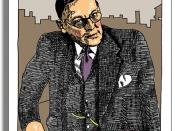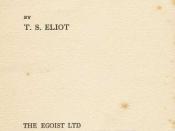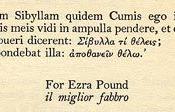In "The Hollow Men" there is a conflict between an intense longing for a state of edenic purity and the contradictory search for a more lasting form of order through denial and alienation. It can be observed that "The Hollow Men" expresses the depths of Eliot's despair, but the poet in a sense chooses despair as the only acceptable alternative to the false existence of the unthinking inhabitants of the waste land.
The despair of "The Hollow Men" is controlled by intellectual principles, in the way the poem consciously evaluates experience in abstract terms, distinguishes between opposing states of being, and establishes, both in form and subject matter, the illusion of visionary experience. The poem represents the progress of Eliot's own "intellectual soul", but this progress is frustrated by the poet's attraction to a visionary imagery.
"The Hollow Men" replaces the rich and chaotic style of The Waste Land with an austerity of expression and a more contemplative mood.
The formal strategy of The Hollow Men, like its content, seems designed to show how effectively the inarticulate influences the conception and creation of a work of art. The formal aspects of the poem imitate the characteristics of the hollow men it portrays. For example, their desire to "avoid speech" (5) is comparable to the poem's general paused rhythm, and the technique of constant repetition and negation: "The eyes are not here / There are no eyes here." (5) Moreover, the "Paralyzed force, gesture without motion" (5) applies not only to the men themselves but to the poem as a whole, which exhibits little narrative progression in the conventional sense and lacks verbs of direct action.
As the hollow men walk together, say prayers to broken stones, and whisper meaninglessly, so the...


